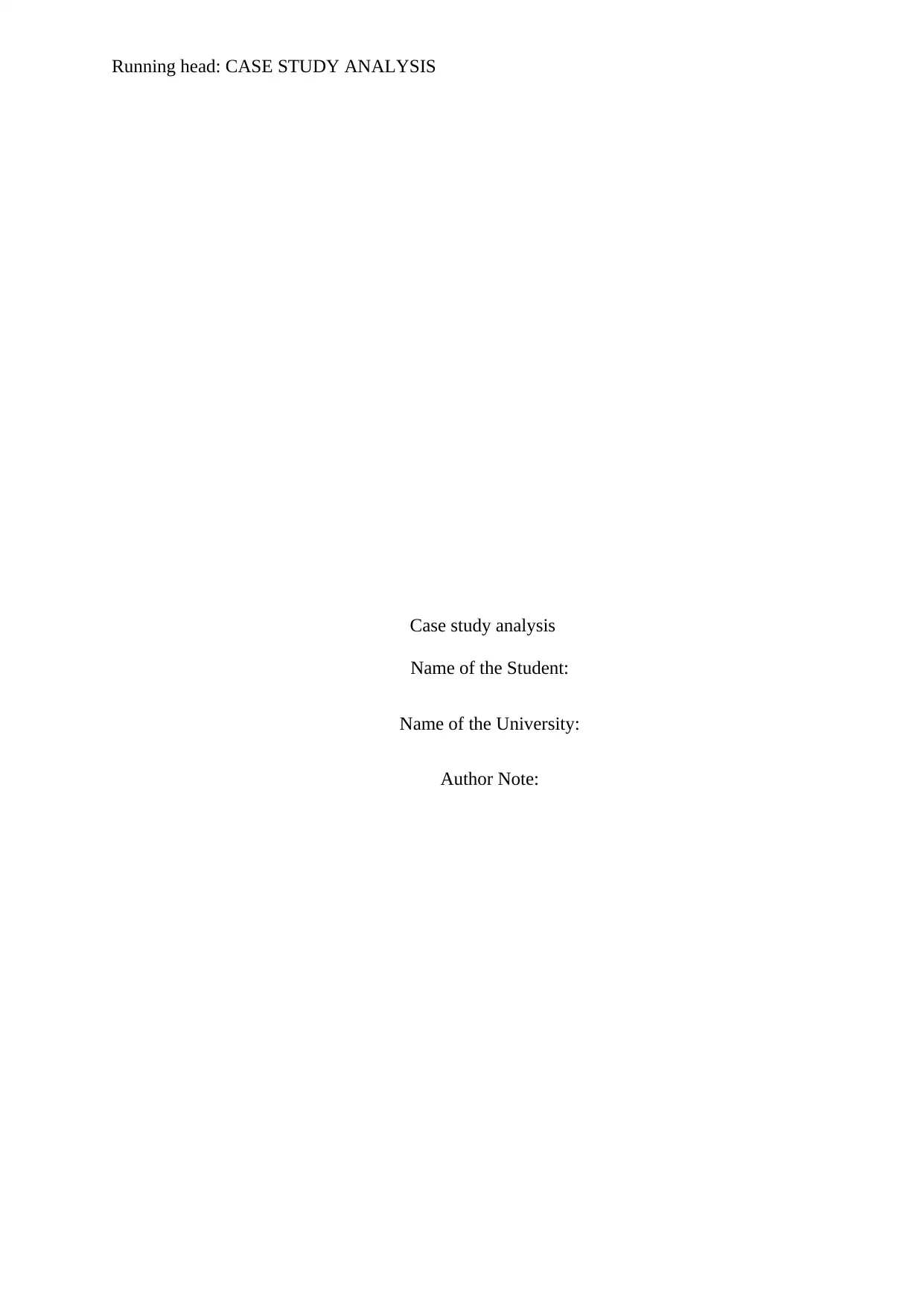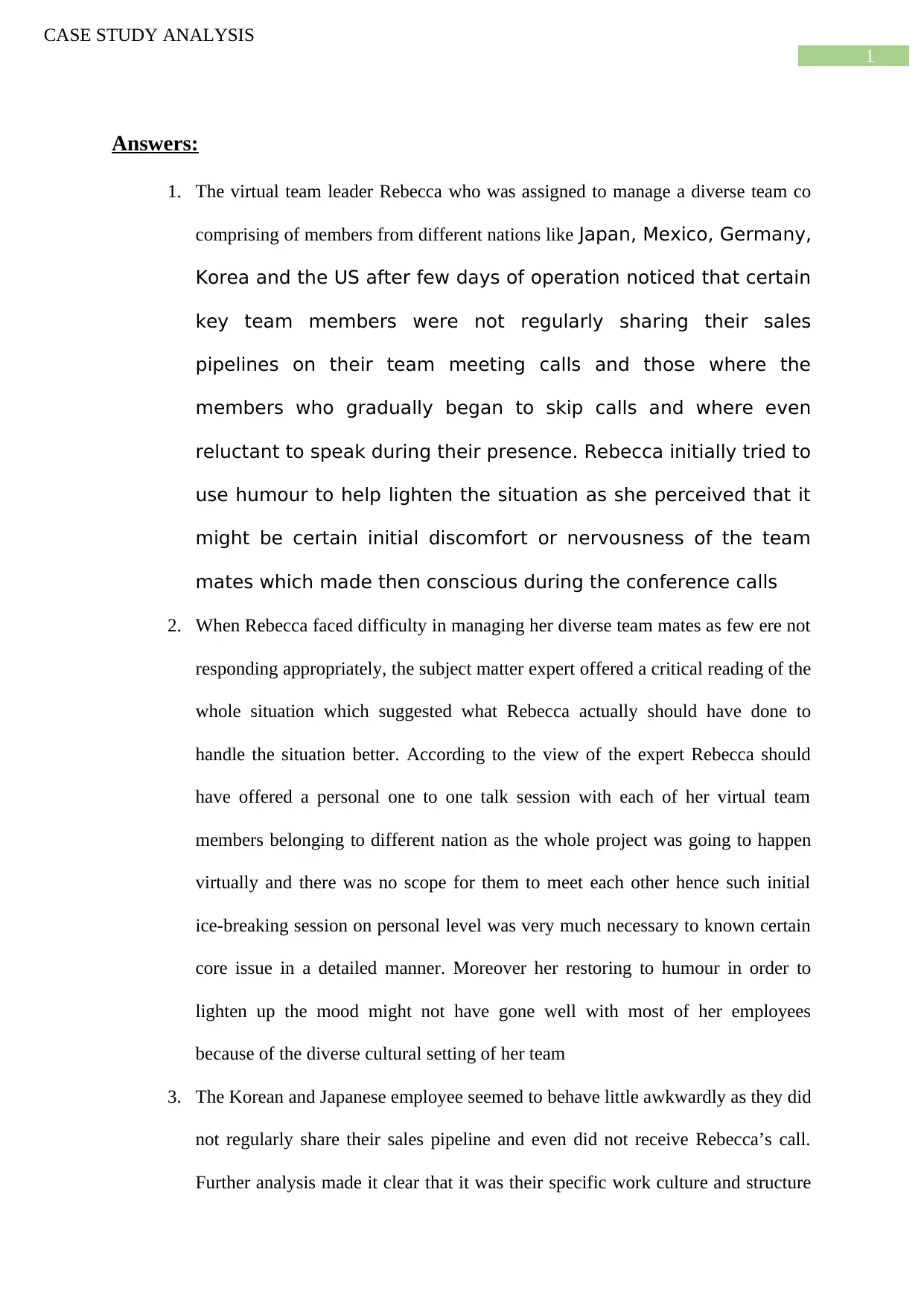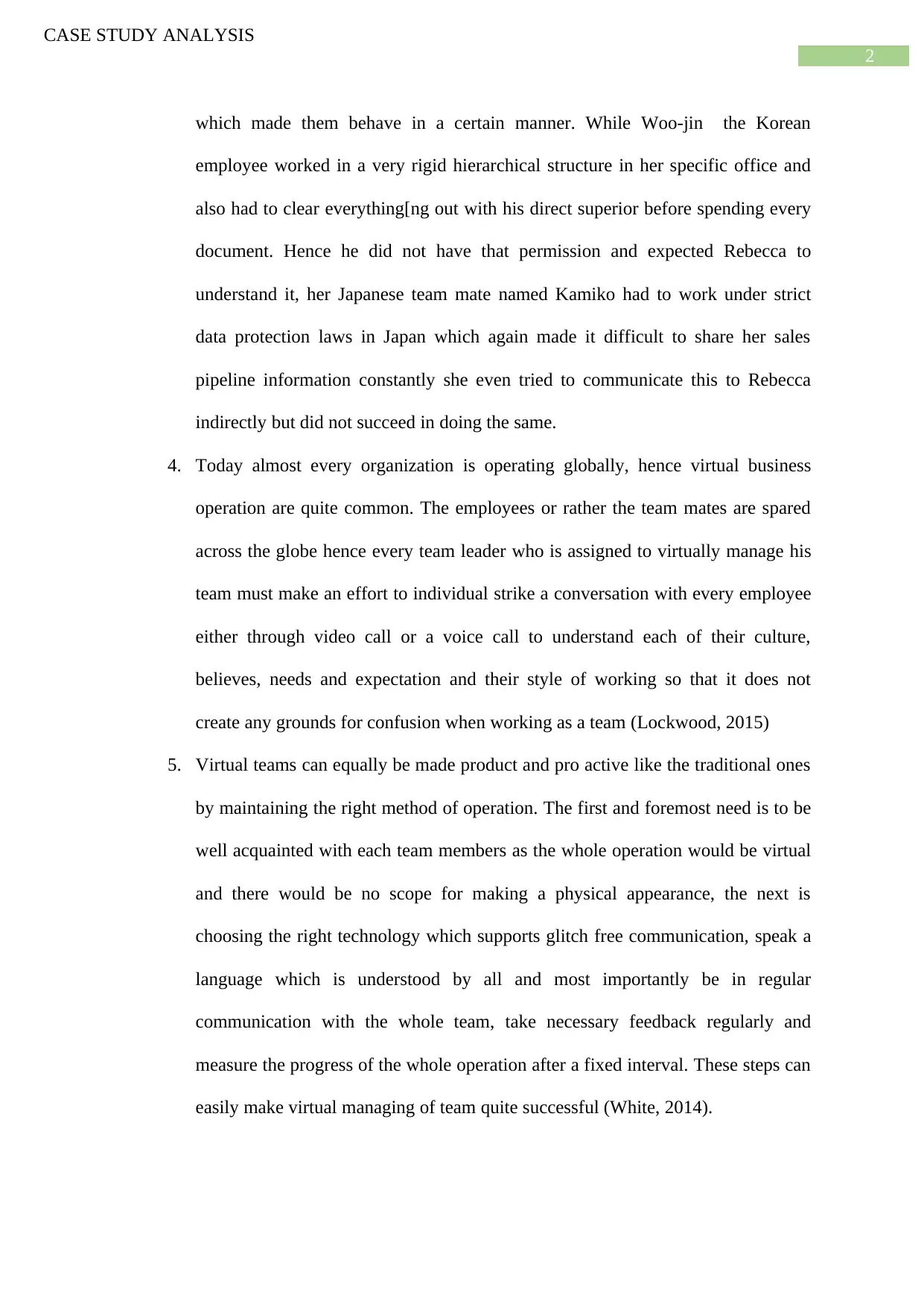Case Study Analysis: Virtual Team Successes and Stresses
VerifiedAdded on 2022/09/08
|4
|708
|12
Case Study
AI Summary
This case study analyzes the challenges faced by Rebecca, a virtual team leader managing a diverse team with members from Japan, Mexico, Germany, Korea, and the US. The analysis highlights communication breakdowns, particularly with Korean and Japanese team members due to cultural and hierarchical work structures. Rebecca's initial attempts at using humor were ineffective, and the case emphasizes the need for leaders to understand individual cultural nuances. The solution advocates for one-on-one conversations to understand each team member's work style, beliefs, and expectations. The study references key literature on virtual team management, emphasizing the importance of technology, communication, and feedback for successful virtual team operations. The case study also highlights the importance of choosing the right technology, speaking a common language, and regular communication to ensure the success of virtual teams.
1 out of 4








![[object Object]](/_next/static/media/star-bottom.7253800d.svg)